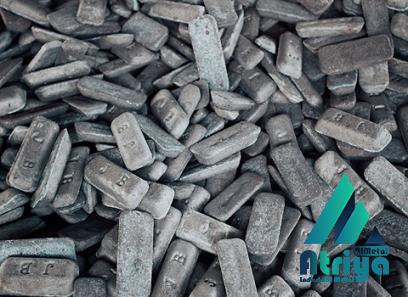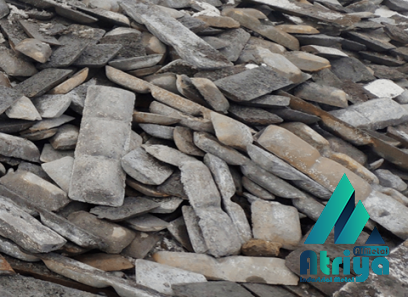A Pillar of the Global Steel Industry China, often called the world’s factory, has long been a major player in various industries. One such sector in which China holds a dominant position is the production of pig iron, a crucial component in the steel manufacturing process. With its vast natural resources, expansive infrastructure, and skilled workforce, China has emerged as the largest producer and consumer of pig iron globally. In this article, we will delve into the reasons behind China’s prominence in the pig iron industry, its impact on the global steel market, and the challenges it faces. Pig iron, often referred to as crude iron, is the intermediate product obtained by smelting iron ore in a blast furnace. It is named so because of the method used to produce it – the molten iron is poured into molds, resembling a sow feeding her piglets. This primary iron alloy is then further processed into various forms of cast iron or converted into steel. China’s strategic advantage in pig iron production can be attributed to several key factors. Firstly, the country possesses abundant iron ore reserves, both in quantity and quality, allowing for cost-effective production.

.
 Additionally, China has invested heavily in modernizing its steel industry, resulting in state-of-the-art blast furnaces and advanced smelting technologies. This investment has also facilitated the adoption of energy-efficient practices and reduced environmental emissions. Furthermore, China’s massive infrastructure development has greatly contributed to the growth of the pig iron industry. The construction sector, which demands large quantities of steel, has expanded rapidly, driving the domestic consumption of pig iron. The country’s ambitious Belt and Road Initiative has also created new avenues for exporting pig iron, further strengthening China’s position as a key player in the global steel market. China’s dominance in the pig iron sector has significant implications for the global steel industry. The country’s large-scale production capacities and competitive pricing have enabled it to capture a substantial portion of the global market share.
Additionally, China has invested heavily in modernizing its steel industry, resulting in state-of-the-art blast furnaces and advanced smelting technologies. This investment has also facilitated the adoption of energy-efficient practices and reduced environmental emissions. Furthermore, China’s massive infrastructure development has greatly contributed to the growth of the pig iron industry. The construction sector, which demands large quantities of steel, has expanded rapidly, driving the domestic consumption of pig iron. The country’s ambitious Belt and Road Initiative has also created new avenues for exporting pig iron, further strengthening China’s position as a key player in the global steel market. China’s dominance in the pig iron sector has significant implications for the global steel industry. The country’s large-scale production capacities and competitive pricing have enabled it to capture a substantial portion of the global market share.
..
 This has inevitable consequences for other pig iron-producing nations, who often struggle to compete with China’s economies of scale and lower production costs. Moreover, China’s significant role in the steel industry impacts its trading partners. Countries reliant on steel imports find themselves heavily dependent on Chinese supply. This dependency can be a double-edged sword. While it ensures access to affordable pig iron, it also makes these nations vulnerable to disruptions in China’s production or changes in its trade policies. Despite its strong position in the pig iron industry, China faces challenges that could potentially impact its future dominance. The country’s environmental concerns, especially related to emissions, have led to increased scrutiny and stricter regulations. This has necessitated the adoption of cleaner and more sustainable production practices, which could impact the industry’s cost-effectiveness.
This has inevitable consequences for other pig iron-producing nations, who often struggle to compete with China’s economies of scale and lower production costs. Moreover, China’s significant role in the steel industry impacts its trading partners. Countries reliant on steel imports find themselves heavily dependent on Chinese supply. This dependency can be a double-edged sword. While it ensures access to affordable pig iron, it also makes these nations vulnerable to disruptions in China’s production or changes in its trade policies. Despite its strong position in the pig iron industry, China faces challenges that could potentially impact its future dominance. The country’s environmental concerns, especially related to emissions, have led to increased scrutiny and stricter regulations. This has necessitated the adoption of cleaner and more sustainable production practices, which could impact the industry’s cost-effectiveness.
…
 Moreover, as other nations strive to enhance their domestic pig iron production and reduce reliance on imports, China may face increased competition. Countries like India, Russia, and Brazil have considerable iron ore resources and could potentially emerge as significant contenders in the global pig iron market. In conclusion, China’s remarkable ascent as the leading producer and consumer of pig iron has had a profound impact on the global steel industry. The country’s abundant resources, extensive infrastructure, and competitive pricing have secured its dominant position. However, China also faces challenges, such as environmental regulations and potential competition from other nations. As the world’s appetite for steel continues to grow, the pig iron industry, and China’s role within it, will remain a critical driver of global economic development.
Moreover, as other nations strive to enhance their domestic pig iron production and reduce reliance on imports, China may face increased competition. Countries like India, Russia, and Brazil have considerable iron ore resources and could potentially emerge as significant contenders in the global pig iron market. In conclusion, China’s remarkable ascent as the leading producer and consumer of pig iron has had a profound impact on the global steel industry. The country’s abundant resources, extensive infrastructure, and competitive pricing have secured its dominant position. However, China also faces challenges, such as environmental regulations and potential competition from other nations. As the world’s appetite for steel continues to grow, the pig iron industry, and China’s role within it, will remain a critical driver of global economic development.











Your comment submitted.